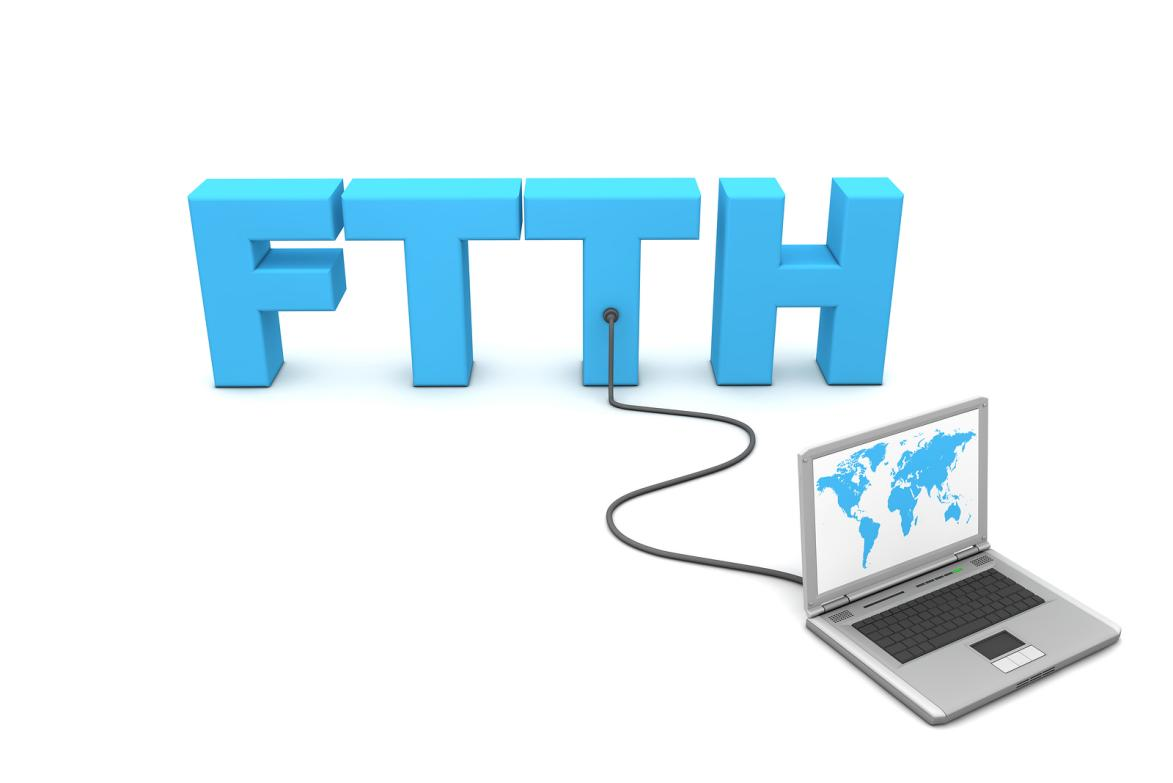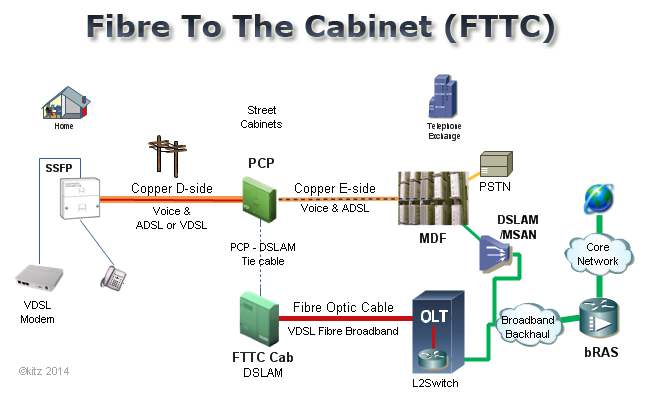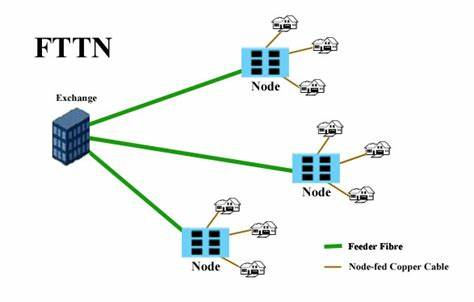By Laura Goldman
When you find out that fiber is coming to your neighborhood (at last!), you’ll want to see how it’s being delivered.
While internet service providers (ISPs) say they’re providing 100% fiber networks, fiber to the curb (FTTC) and fiber to the node (FTTN) options don’t actually provide that fiber all the way to your residence. Just be aware that fiber to the home (FTTH) is the one and only option that provides pure fiber directly to your home without using any copper wiring along the way.

This is the fiber installation option you want to look for, as it will give you the best performance. Unlike the other options, fiber is installed directly into your home without using any coaxial cables or copper wiring, so it provides the highest bandwidth, fastest speed and greatest reliability.
Here’s how FTTH—also called fiber to the premises (FTTP)—works: The fiber is installed from your ISP’s closest central office to a box, called an optical network terminal (ONT), that’s placed inside or outside your home. The ONT converts the fiber optic signals to electronic signals that are transmitted to your router via an ethernet cable.
Per the FTTH Council, an organization that advocates for fiber in homes, in order for an installation to be classified as FTTH, the fiber must cross the property line and end either inside the home, on an outside wall of the home or within about 6.5 feet of an external wall on the property.
The one downside to FTTH is that it isn’t yet widely available. There’s promising news, however. Fiber passes more than 54 million U.S. homes, and with a growth rate in fiber installation of about 10% per year, researchers predict that fiber could be available in 35% of U.S. households over the next decade.
In addition, thousands of FTTH projects are currently in development all around the world, according to the Fiber Optic Association (FOA), so FTTH may be available to you in the not-so-distant future.

No, fiber isn’t installed inside that low concrete border separating your property from the street.
“Curb” in this case refers to a utility pole or cabinet that contains a junction box called a node, in which the main fiber optic cable from your ISP’s central office is installed.
Inside the node, the fiber optics are converted into electronics that are transmitted using existing coaxial cables or copper telephone lines to your home—as well as to other homes within about 1,000 feet of the node. Fiber internet providers call the connection from the node to your home “the last mile,” although it’s not necessarily that exact distance.
The quality and age of your home’s copper wiring may affect your internet connection. For example, homes with older copper wiring may have less available bandwidth.

Also called fiber to the neighborhood, this type of delivery is similar to FTTC, with one important difference.
Instead of just your immediate neighbors, FTTN provides service to several hundred homes located within an approximately one-mile radius of the node utility pole—so in this case, “the last mile” is accurate.
The farther away your home is from the node, the farther the data must travel through copper wiring, which may result in a slower and less reliable connection.
If you’re still on the lookout for the right ultra-fast internet connection for streaming, gaming, working from home and running your smart home—all with enough bandwidth for everybody, find out about Frontier Fiber. Then check our Fiber Expansion page to see when it’s available at your address
Contact: Andy Huang
Phone: 0086-755-89239407
E-mail: sales@beskco.com
Add: No.3106,Longgang Avenue,Pidi Town, Longgang District, Shenzhen China
We chat